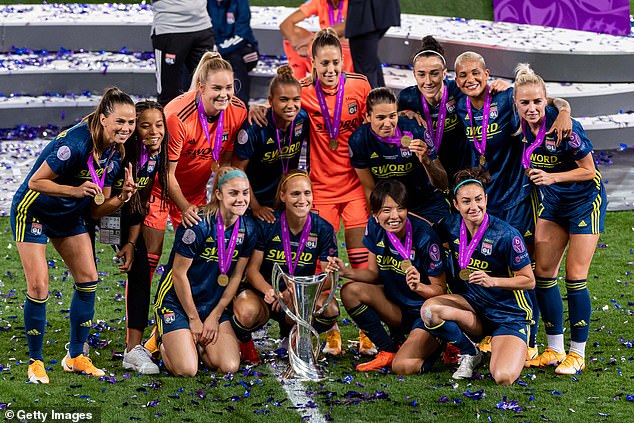
The landscape of elite European women`s club football is set for a dramatic overhaul. The UEFA Women`s Champions League (UWCL) is ushering in a transformative era for its 2025-26 season, bidding farewell to its familiar group stage format and embracing an innovative 18-team league phase, famously dubbed the `Swiss model`. This significant structural change promises increased competition, more diverse matchups, and a continuous narrative of high-stakes football. As the football world gears up for the inaugural draw, the anticipation for this new chapter is palpable.
Understanding the `Swiss Model`: A New Frontier for Competition
For years, the UWCL relied on a straightforward group stage, leading into a knockout bracket. While effective, it often meant repetitive matchups or, conversely, uneven groups that lacked sustained competitive tension. The new `Swiss model` aims to rectify this, introducing a more dynamic and meritocratic system.
Instead of compartmentalized groups, all 18 participating teams will compete within a single league table. Each team is meticulously paired to play six different opponents, with three matches at home and three away. This ensures a wider variety of adversaries throughout the initial phase, challenging clubs to adapt to diverse playing styles and travel demands. Points are awarded in the standard fashion – three for a win, one for a draw, and zero for a loss – leading to a clear, singular ranking.
This innovative approach is designed to keep more teams in contention for longer, generating excitement across multiple matchdays. The top four teams from this league phase will earn a direct ticket to the quarterfinals. Teams finishing fifth through twelfth will enter a two-legged knockout playoff to battle for the remaining quarterfinal berths, adding another layer of thrilling elimination football. The teams ranked 13th to 18th, regrettably, will see their European journey conclude, emphasizing the cut-throat nature of the new system.
The Draw: Orchestrating the New Era
The transition to this league phase officially kicks off with a pivotal draw, set to take place in Nyon, Switzerland. This isn`t your average quick-fire affair; it`s a carefully choreographed event designed to ensure fairness and adherence to specific parameters. The 18 clubs are stratified into three pots of six, based on their UEFA club coefficient rankings at the season`s outset. Reigning champions Arsenal, for instance, lead the charge from Pot 1, a testament to their consistent performance.
The process itself is a fascinating blend of tradition and modernity – manual ball drawing from bowls, complemented by automated software to ensure logistical precision. Three bowls will contain the names of the clubs from each pot. Each club is drawn to face two opponents from each of the three pots, ensuring a balanced schedule against a spectrum of seeded and unseeded teams. Furthermore, to preserve national league integrity and prevent early clashes, clubs from the same association cannot be drawn against each other in their initial pairings. However, teams can still face up to two opponents from any single other association, adding a strategic element to the draw’s outcome.
The Contenders: A Blend of Established Powerhouses and Ascendant Stars
The roster of teams already secured for this groundbreaking league phase reads like a who`s who of European women`s football, alongside some exciting new entrants. These are the clubs that will etch their names into the inaugural `Swiss model` history:
Direct Qualifiers:
- Arsenal (England, defending champions)
- Lyon (France)
- Paris Saint-Germain (France)
- Bayern Munich (Germany)
- Wolfsburg (Germany)
- Barcelona (Spain)
- Chelsea (England)
- Benfica (Portugal)
- Juventus (Italy)
Winners from the Qualifying Round:
The thrilling conclusion of the third qualifying round saw another nine teams cement their place, adding further depth and excitement to the competition:
- Paris FC (France)
- Real Madrid (Spain)
- Atlético de Madrid (Spain)
- Manchester United (England)
- Roma (Italy)
- Twente (Netherlands)
- Vålerenga (Norway)
- St. Polten (Austria)
- OH Leuven (Belgium)
This diverse lineup, featuring perennial giants and impressive qualifiers, promises a league phase brimming with high-quality football and unpredictable outcomes.
The Road to Oslo: Key Dates and Milestones
The journey through this revamped UWCL season will be a marathon, culminating in the ultimate prize. Here are the crucial dates to mark on your calendars:
| Phase | Dates |
|---|---|
| League Phase | |
| Matchday 1 | October 7-8 |
| Matchday 2 | October 15-16 |
| Matchday 3 | November 11-12 |
| Matchday 4 | November 19-20 |
| Matchday 5 | December 9-10 |
| Matchday 6 | December 17 |
| Knockout Phase Play-offs | |
| Draw | December 18 (Nyon, Switzerland) |
| First Leg | February 11-12 |
| Second Leg | February 18-19 |
| Quarterfinals | |
| Draw | December 18 (Nyon, Switzerland) |
| First Leg | March 24-25 |
| Second Leg | April 1-2 |
| Semifinals | |
| Draw | December 18 (Nyon, Switzerland) |
| First Leg | April 25-26 |
| Second Leg | May 2-3 |
| Champions League Final | May 22-24 (Ullevaal Stadion, Oslo, Norway) |
A New Dawn for Women`s Football
The introduction of the `Swiss model` in the UEFA Women`s Champions League is more than just a procedural change; it`s a testament to the surging growth and professionalism within women`s football. This format promises to elevate the standard of competition, increase tactical diversity, and ultimately offer a more engaging and unpredictable spectacle for fans worldwide. As teams prepare for the draw, they are not just entering another season, but stepping into a new era where every match carries amplified significance, and the path to European glory is both challenging and exhilarating. The stage is set for a truly memorable season, culminating in what is sure to be an epic final in Oslo.










